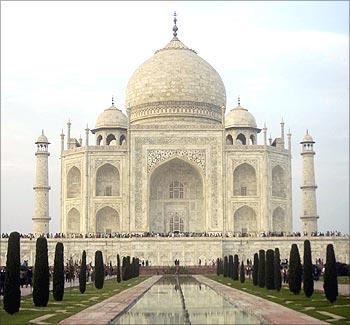
India: Rank 1
Remittances: $52 billion
India continues to be the top recipient of global remittance flow at $52 billion in 2009, the World Bank has said in a report.
Remittance is defined as the sum of money paid to someone at a distance. A 'remittance transfer' refers to the transfer of money from an individual, usually a person who has emigrated from her city or country of origin, to another individual, usually a relative who remains at home.
Migrant remittance flow to developing countries, including India, will be around $317 billion this year, a lower-than-expected fall from the year-ago level, but will return to the recovery path in years to come, the World Bank has said.
Remittance flow to developing countries will touch $317 billion in 2009, and going forward, the inflows to these nations are expected to remain almost flat in 2010, (with a modest rise of 1.4 per cent) and grow by 3.9 per cent in 2011, the World Bank said in its Migration and Development Brief.
So which are the other top recipients of remittances? Click on NEXT to find out. . .

China: Rank 2
Remittances: $49 billion
People's Republic of China is the largest country in East Asia and the most populous in the world with over 1.3 billion people, approximately one-fifth of the world's population.
Chinese population, like its Indian counterpart, has migrated to several parts of the world and has established a firm footing in new pastures through its skills, talent and professionalism.
Global projected remittance flow this year would represent a 6.1 per cent fall from the 2008 level against the earlier expectation of a 7.3 per cent dip.
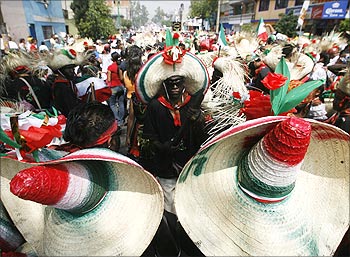
Mexico: Rank 3
Remittances: $26 billion
Mexico is the fifth-largest country in the Americas and the 14th largest independent nation in the world.
As the only Latin American member of the Organisation for Economic Co-operation and Development, Mexican economy has developed as an upper middle-income country.
The country has the 11th largest economy in the world by GDP by purchasing power parity.
The remittances from Mexican citizens working in the US account for 0.2 per cent of Mexico's GDP and is the seventh largest source of foreign income after oil, industrial exports, manufactured good, electronics, automobiles and food exports. According to Mexico's central bank, remittances fell 2.6 per cent in 2009 to $26 billion.
As per the newly available data, the officially recorded remittance flow to developing countries reached $338 billion in 2008, higher than the previous estimate of $328 billion, the World Bank said.

The Philippines: Rank 4
Remittances: $19 billion
The Philippines, officially known as the Republic of the Philippines, comprises 7,107 islands in the western Pacific Ocean.
The Filipino economy is heavily reliant on remittances as a source of foreign currency, surpassing foreign direct investment.
The World Bank report said that remittance flows this year as well as in the days to come is likely to witness certain risks, and are expected to slow down "in a lagged response to a weak global economy".

Poland: Rank 5
Remittances: $11 billion
Poland is the 9th largest country in Europe with a population of over 38 million people.
Poland is considered to have one of the healthiest economies of the post-communist countries, with GDP growing by 6.1 per cent in 2006.
In the coming days, remittance flows in all the regions are likely to face three downside risks: a jobless economic recovery, tighter immigration controls and unpredictable exchange rate movements.
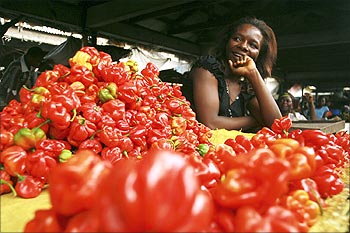
Nigeria: Rank 6
Remittances: $10 billion
Nigeria is the most populous country in Africa and the eighth most populous country in the world.
The country's bulk of economic activity is centred in four main cities: Lagos, Kaduna, Port Harcourt, and Abuja.
Nigeria is the US's largest trading partner in sub-Saharan Africa and supplies a fifth of its oil and 11 per cent of oil imports.
"With this sluggish pace of recovery, remittance flows are unlikely to reach the 2008 level even by 2011," the World Bank said as remittance flows could witness significant risks, pursuant to the global slump.

Romania: Rank 7
Remittances: $9.5 billion
Romania has the 9th largest territory and the 7th largest population (with 21.5 million people) among the European Union member states.
While Romania's income level remains one of the lowest in the European Union, reforms have increased the growth speed. Romania is now an upper-middle income country economy.
After the Communist regime was overthrown in late 1989, the country experienced a decade of economic instability and decline. From 2000 onwards, however, the Romanian economy was transformed into one of relative macroeconomic stability.
So far this year, South Asia saw better-than-expected remittance flows. Remittance to Pakistan rose by 24 per cent in the first eight months of 2009 on a year-on-year basis, for Bangladesh it was 16 per cent and Nepal (13 per cent).
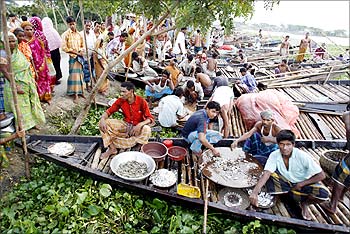
Bangladesh: Rank 8
Remittances: $9.3 billion
Bangladesh is the seventh most populous country in the world with a high poverty rate. However, per-capita (inflation-adjusted) GDP has more than doubled since 1975, and the poverty rate has fallen by 20 per cent since the early 1990s.
Although two-thirds of Bangladeshis are farmers, more than three quarters of Bangladesh's export earnings come from the garment industry. The industry now employs more than 3 million workers, 90 per cent of whom are women.
Regarding India, the report said among other factors, "exchange rate depreciation and widening interest rate differentials encouraged remittances to India for investment purposes."

Egypt: Rank 9
Remittances: $9.1 billion
Egypt is one of the most populous countries in Africa and West Asia. Egypt's economy is one of the most developed in West Asia, backed by sectors like tourism, agriculture, industry and service.
Egypt's economy depends mainly on agriculture, media, petroleum exports, and tourism. There are more than three million Egyptians working abroad, mainly in Saudi Arabia, the Persian Gulf and Europe.
However, a rapidly-growing population, limited arable land, and dependence on the Nile all continue to overtax resources and stress the economy.
(Besides, developing countries with migrants in the Gulf Cooperation Council (GCC) countries, such as India, Pakistan, Bangladesh, Nepal and the Philippines have experienced smaller decline in remittance flows.
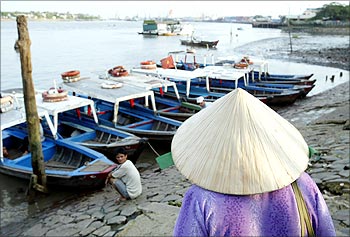
Vietnam: Rank 10
Remittances: $7 billion
Historically, Vietnam has been an agricultural society. The Vietnam War destroyed much of the country's economy.
However, as a result of several land reform measures, Vietnam is now the largest producer of cashew nuts with a one-third global share and second largest rice exporter in the world after Thailand. Vietnam has the highest percentage of land use for permanent crops.
The World Bank said that remittance flows to countries in the Latin America and the Caribbean region until the third quarter of 2009 show larger declines than expected earlier.